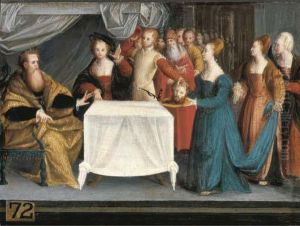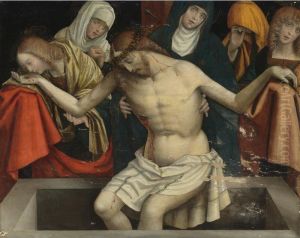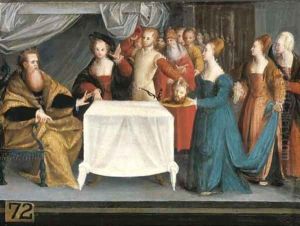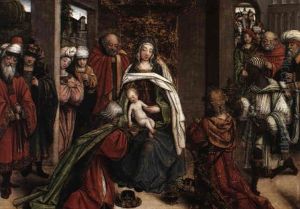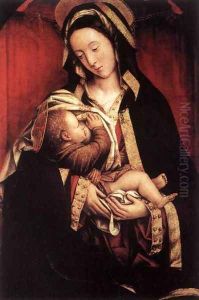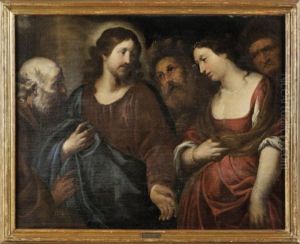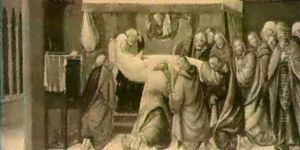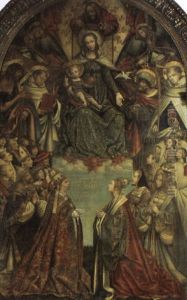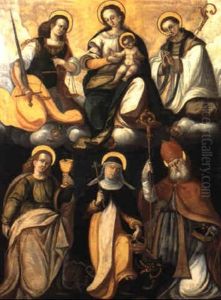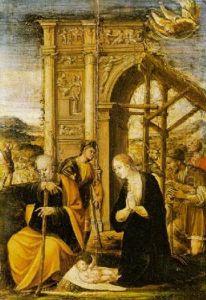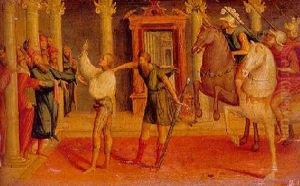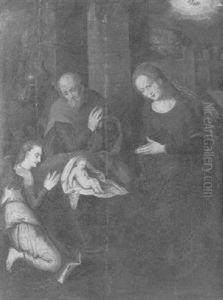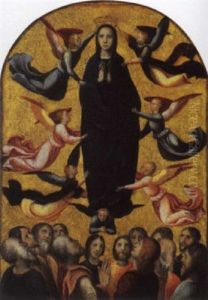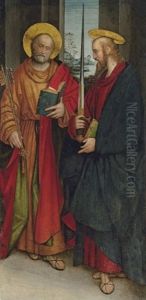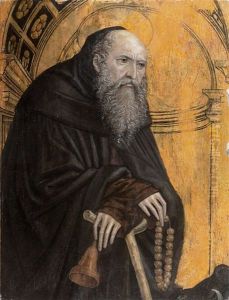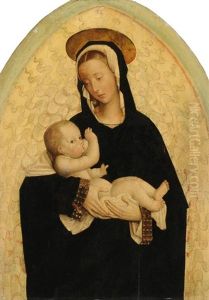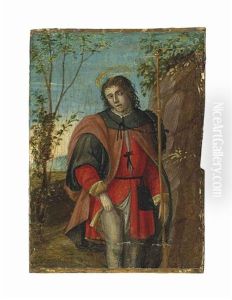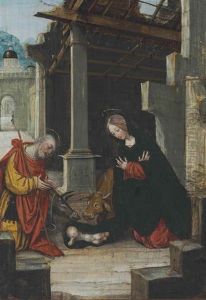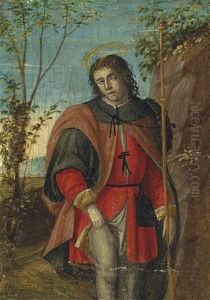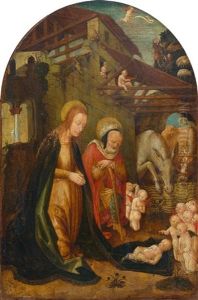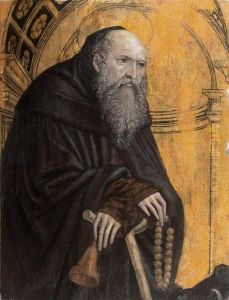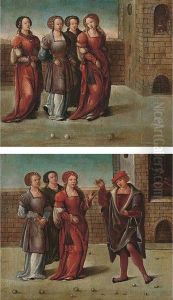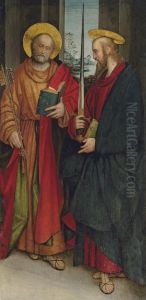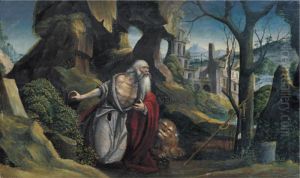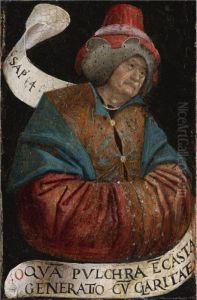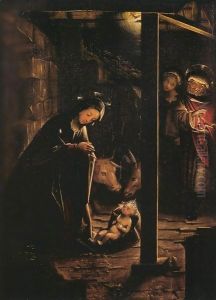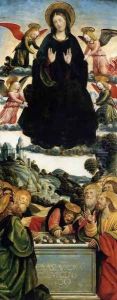Defendente Ferrari Paintings
Defendente Ferrari was an Italian painter active during the Renaissance period, primarily in the Piedmont region. He was born around 1480/1485 in Chivasso, near Turin, in what is now the Piedmont area of Italy. Ferrari is known for his religious paintings, which are deeply reflective of the devotional culture and artistic style of Northern Italy during the late 15th and early 16th centuries. His work is characterized by its vibrant color palette, detailed landscapes, and intricate depictions of religious narratives.
Ferrari's training and early influences remain somewhat obscure, but his style suggests that he was aware of the developments in Lombard and Piedmontese painting of his time. He might have been influenced by the work of Giovanni Martino Spanzotti and Macrino d'Alba, among others, who were prominent painters in the region. There is also evidence to suggest that he might have had connections with Leonardo da Vinci's Milanese circle, which would explain the nuanced psychological expressions found in his figures and the sophisticated handling of drapery and landscape.
Throughout his career, Defendente Ferrari painted a number of altarpieces and frescoes for churches and convents, many of which have survived to this day. His works are notable for their detailed iconography and the use of gold leaf, which adds a divine glow to his paintings. Among his most famous works is the Annunciation altarpiece for the church of San Domenico in Chivasso and the Passion of Christ series for the Confraternity of the Battuti Bianchi in Ivrea.
Despite his significant contributions to the art of the Piedmont region, Ferrari's work was somewhat overshadowed by the overwhelming influence of the High Renaissance artists working in the major centers of Italy, such as Rome, Florence, and Venice. However, in recent years, there has been a renewed interest in regional artists like Ferrari, who played crucial roles in the development of Renaissance art outside the main artistic hubs.
Ferrari's death is believed to have occurred around 1540. His legacy lives on through his contributions to Italian Renaissance art, particularly in the Piedmont region, where his works continue to be studied and admired for their beauty and historical significance.
